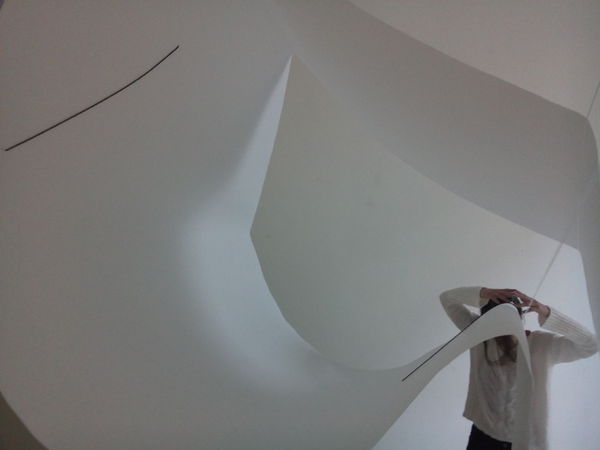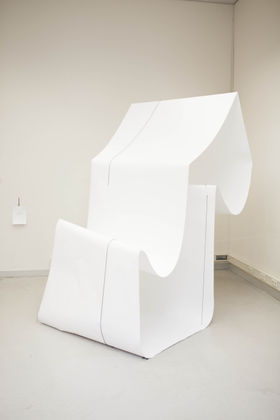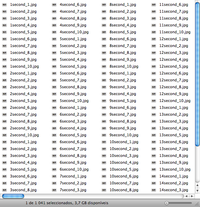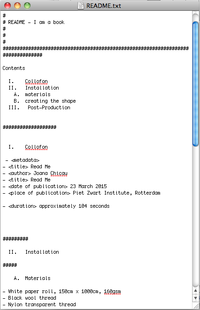PHOTOBOOK// finale: Difference between revisions
No edit summary |
No edit summary |
||
| (17 intermediate revisions by the same user not shown) | |||
| Line 30: | Line 30: | ||
[[File: Joanawork.jpg |280px|left|Photography by Cihad]] | |||
| Line 139: | Line 140: | ||
<small> A montage of the three users/ reader experiencing the piece: https://vimeo.com/123540281 </small> | <small> A montage of the three users/ reader experiencing the piece: https://vimeo.com/123540281 </small> | ||
| Line 168: | Line 170: | ||
10 Florian Cramer speech on “Unbound books“, https://vimeo.com/24308435 | 10 Florian Cramer speech on “Unbound books“, https://vimeo.com/24308435 | ||
11 Reading / Feeling - If I Can’t Dance Archives. | 11 http://occasionalpapersshop.tictail.com/product/the-form-of-the-book-book | ||
12 Reading / Feeling - If I Can’t Dance Archives. | |||
13 Method by Dick Raaijmakers | |||
14 The century of artists book : Johanna Drucker | |||
15 Dance As A Way Of Knowing: Interview With Alva Noë | |||
16 A good reference of a use of how to reconstruct and reperform the early solos of pioneering modernist choreographer, Ted Shawn at the Museum of Modern Art http://www.thereaccessionoftedshawn.com/ | |||
17 On Scores, Notation and the Trace in Dance, by Myriam Van Imschoot | |||
18 www.vincentdunoyer.com/solos-for-others | |||
19 http://www.collectivemagpie.org/work/ | |||
20 http://acconci.com/ | |||
21. Marie Le Cool (http://www.marcellealix.com/artistes/oeuvres/1743/marie-cool-fabio-balducci) | |||
22. Zen Video, Nan June Paik: https://www.youtube.com/watch?v=ULOhJqc3Wjc | |||
23. Lygia Clark:</small> | |||
http://portaldoprofessor.mec.gov.br/storage/discovirtual/galerias/imagem/0000002130/0000025713.jpg | |||
24. The Big Book by Alison Knowles was just that: a book. | |||
http://www.passengerbooks.com/stage/main.php?lang=en | |||
25. Performance with Paper's sound: http://www.paperensemble.com/index.html | |||
26. Dorit Margreiter y Lynne Cooke. Sobre “Descripción”: https://vimeo.com/19225976 | |||
Latest revision as of 11:46, 2 March 2016
- ---- an object & an event - -----
“For Massumi, affect is precisely a matter of how intensities come together, move each other, and tranform and translate under and beyond meaning, semantics and fixed systems, cognitions. Part of the assumpstion here is that, even in the most reactionay circumstances, nothing happens if affective intensity has not already paid us a visit. This refines our understanding of why territory - spatial and temporal - is always “existential territory“. It has as much a territorry that enables movement as something that keeps everything in its place, it is movement itself.” Reading / Feeling - If I Can’t Dance Archives.
About books.
A reflection on the basis structure of a book. The formal elements intrinsic to book production - geometrical, alphabetical, numerical grammar that guides the reader through the content. This conventional, regulated patterns, are often perceived as passive elements, but the way in which this elements are made visible throughout the book highly determine how to access the content. In a way, their function is to “choreograph” the readers movement into the content. We are part of an automated semiotic process, in Guy de Cointet words, “iconic significance drawn from the environment and the media and consequently familiar enough to be grasped instantly in an alienated manner”. How this visuals elements rule or give room to freedom for the reader to execute.
"Conceiving the page as a surface to to travel, a space on which to act - with the movement of language over the self enclosed performance space of the printed page." - Vito Acconci.
About performance.
Choreography = writing (graph) + dancing (choros)
Following this definition, and in analogy with the role of metacodes in books, my aim is to build a “choreographic object” (William Forsythe), a physical model of mobilizing language.
It is relevant to mention another concept inherent to this piece, the one of performativity a term for the capacity of speech and communication not simply to communicate but rather to act or consummate an action, or to construct and perform an identity (at wikipedia).
Finding an appropriate shape - the book as a whole.
The idea of building a unique linked piece, came after listening to Florian Cramer’s speech on “Unbound books” and looking at both works from David Stairs, Boundless 1983 and Maurizion Nannucci, Universum 1969. The shape works as a metaphor to the idea of the book as an entity to be reckoned within its entirety. This long single piece provides a continual physical surface for the user to relate with. And as for the size, the exaggerated proportion aims to emphasize the subliminal aspects being discussed and better illustrate the idea of the human in motion as part of a sensory motor towards understanding.
The content.
The piece serves as a medium for thought on the book as whole as well as the discrete elements of its internal structure. The second feature being represented with threads, as a way to form a graphical path, comparable to a notation system, for the reader to follow. The different thicknesses of the materials suggest the different hierarchies present in book structures. The reader is now the performer, who follows the “thread” of the book. The experience of going through “pages” is turned into an event. A sculptural book, systematic and abstract, allowing movement and perception to be constructed in the moment of experience.
“Dance in a sense of performance is an enactment or modeling of this fundamental fact about the world around us, which we dynamically interact with.” Alva Noe
About analogue and digital, an extensive connection.
The act of performance and its relation with technology, often follows the idea of capturing movement, within space and time: “..associating the interests of what a body can do (while dancing) to the exploration of what a technology can do (while capturing).” Stamina Portanova at Moving without a body.
Performance ephemeral nature often leads to a need to think how to preserve it. In choreography’s tradition, video and photography along with written notation systems, have been widely used not only as means of documentation but also as to re-construct and re-interpret past performances.
At the moment of the happening, different ways of recording will be used. One being incorporated in the viewers body: a go-pro camera . The second, a live stream, that captures the overall scene/stage of the performance - an immediate production of digital motion pictures. And a third possibility, being viewers’ own recording devices.
The collection of photographs and videos taken during this event, is for me, not an end to this event, but mostly a way to convey cross-temporarility into it. As a collection of material to generate further possibilities. In this sense photography won’t only be about the traces and remains, but what could be possibly be built upon.
“Deleuze remind us, there is nevertheless a paradox of memory: it mantains the images abstracted by the imagination as infinitely repeatable but this repeatability is accompanied by a change: we remember the same thing again and again, but our relation to it is different each time it returns. in fact, in order to reconstitute the particular object as distinct, memory has to be a future extension of the imagination(..) /impression within this living present or passive synthesis which is duration.(...) Imagination is the compression (very importantly associated by Deleuze with the intellect and calculation) gives them back their objectivity, making them appear different, divisible form.”
Photography as a way of documenting the experience but also as an open window for future.
Thank you, Joana Chicau March 2015
Find here a short-clip of the installation book-piece: https://vimeo.com/123485109
"Empiricism, on the contrary, lays the explanatory stress upon the part, the element, the individual, and treats the whole as a collection and the universal as an abstraction." Essays in Radical Empiricism (1996) - William James
Sketches for a non-linear closed narrative:
The after-life (Post-production)
"Don't look at the body, look at the movement" - Deleuze
A collection of images were extracted from a video taken during the experience, using a gopro, while the user/performer/ reader of the piece was in action.
This collection is constituted of 10 pictures per second, in an overall amount of x seconds.
By recording the experience, the sensorial bodily experience is now translated into representational images. This images are now part of an archive open for studying the experience itself and possible future outcomes.
- How do we find our way through built spaces?
By looking at the sequence of images it is possible to analyze and possibly re construct both the physical trajectory as well as the the rhythm that follows.
This is a way of documenting the event through the users/ reader perspective. An inner site, that allows to comprehend the interplay between the built space and the person in action: "an empirical examination of the cognitive processes involved in spatial learning, and the orientation behavior on which this is based, can be traced in psychology to the early work of the american psychologist Edward Tolman, who introduced the concept of the "cognitive map". from Pattern: Ornament, Structure and Behavior, by Andrea Gleiniger and Georg Vrachliotis
This "human-environment interaction" creates a parallel towards how people behave, react to spacial elements and structures, either in regards to analogue or digital medias. In this case, the process of "wayfinding", getting acquainted with the piece, by means of following very concrete physical attributes aims to point to the same patterns in the realm of publishing.
"mental processing of environmental stimuli is strongly based on visual perception theories and cognitive representation. In the 1950's, American psychologist James J. Gibson pointed out that the human (and animal) system of perception is evolutionary organized in a manner that enables it to recognize environmental attributes, such as spatial depth or movement , directly from invariants in the visual input. Gibson coined the term "affordance" in his book published in 1979, The Ecological Approach to visual perception. This describes the attributes of an object or a complex constellation of stimuli that suggest certain courses of action (…) The concept of affordance was popularized largely by the american cognitive scientist Donald Norman for the fields of ergonomics and user-friendly designs of computer systems. As previously mentioned, the concept can be applied to the geometric aspects of architectural spaces, such as spatial shapes, as well as to ground plan configurations, lighting, and signage or orientation systems" by Andrea Gleiniger and Georg Vrachliotis
In the near future I would like to better understand how to structure databases in different ways and explore compositional innovations that could come along with it. Looking at the past and future in the present moment.
I believe that not only imagery, but other forms of content, such as sound and written text could enhance and generate better understanding of this kind of experiments. As in different choreography databases, in which different language systems are integrated in scores.
"Before proceeding I need to comment on my use of the word database. In computer science database is defined as a structured collection of data. The data stored in a database is organized for fast search and retrieval by a computer and therefore it is anything but a simple collection of items. Different types of databases — hierarchical, network, relational and object-oriented — use different models to organize data. For instance, the records in hierarchical databases are organized in a treelike structure. Object-oriented databases store complex data structures, called "objects," which are organized into hierarchical classes that may inherit properties from classes higher in the chain.1 New media objects may or may not employ these highly structured database models; however, from the point of view of user's experience a large proportion of them are databases in a more basic sense. They appear as a collections of items on which the user can perform various operations: view, navigate, search. The user experience of such computerized collections is therefore quite distinct from reading a narrative or watching a film or navigating an architectural site." by Lev Manovich, Database as a Symbolic Form
A montage of the three users/ reader experiencing the piece: https://vimeo.com/123540281
References
0 Meta-communication, by Gregory Bateson to refer to "communication about communication" "Mind, Nature, and Consciousness: Gregory Bateson and the New Paradigm."
1 Hetty Blades on Creative Computing and the Re-Configuration of Dance Ontology
2 http://en.wikipedia.org/wiki/Lexis_(linguistics)
3 Philip Ording: ROUND AND ROUND AND ROUND
4 In/extensive Topologies: Sarah Rubidge and Chris Jannides
5 Capturing Dance: Kasey Lack
6 Moving without a body: Stamatia Portanova
7 William Forsythe: choreographic objects essay
8 http://sarma.be/oralsite/pages/What%27s_the_Score_Now_Publication/
9 Henri Chopin; Guy de Cointet and Channa Horwtizt: Signs,Rules, Processes - Indetermination and deconstruction.
10 Florian Cramer speech on “Unbound books“, https://vimeo.com/24308435
11 http://occasionalpapersshop.tictail.com/product/the-form-of-the-book-book
12 Reading / Feeling - If I Can’t Dance Archives.
13 Method by Dick Raaijmakers
14 The century of artists book : Johanna Drucker
15 Dance As A Way Of Knowing: Interview With Alva Noë
16 A good reference of a use of how to reconstruct and reperform the early solos of pioneering modernist choreographer, Ted Shawn at the Museum of Modern Art http://www.thereaccessionoftedshawn.com/
17 On Scores, Notation and the Trace in Dance, by Myriam Van Imschoot
18 www.vincentdunoyer.com/solos-for-others
19 http://www.collectivemagpie.org/work/
21. Marie Le Cool (http://www.marcellealix.com/artistes/oeuvres/1743/marie-cool-fabio-balducci)
22. Zen Video, Nan June Paik: https://www.youtube.com/watch?v=ULOhJqc3Wjc
23. Lygia Clark:
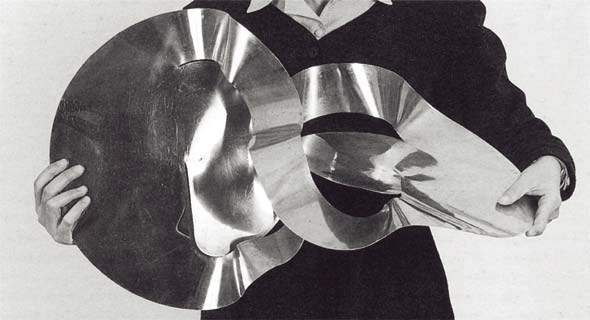
24. The Big Book by Alison Knowles was just that: a book.
http://www.passengerbooks.com/stage/main.php?lang=en
25. Performance with Paper's sound: http://www.paperensemble.com/index.html
26. Dorit Margreiter y Lynne Cooke. Sobre “Descripción”: https://vimeo.com/19225976

